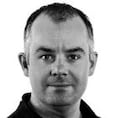Four years ago The Irish Times published this in-depth profile of Liam Byrne after he had lost his home in Dublin to the Criminal Assets Bureau. In April 2019, Byrne was living in Britain. However, in the intervening years Britain’s National Crime Agency (NCA) carried out an investigation into allegations that Byrne was the leader of a gang selling firearms to other criminals. As that inquiry neared a conclusion, Byrne left Britain for Dubai, where he has been living of late.
On May 26th he flew from Dubai to Mallorca for a holiday with some family members. On Sunday evening he was arrested in a restaurant in the Alcúdia area of the Spanish island. The 42-year-old was detained by Spanish police at the request of Britain’s NCA. The British authorities are now seeking the Irishman’s extradition from Mallorca to face firearms-related charges arising from the NCA’s investigation into Byrne.
Article published on March 30th, 2019
Like a stereotypical London villain from the 1960s, Liam Byrne has travelled through life in a tight and violent group consisting of men he is related to or has known since he was a boy. Only a select few outsiders are accepted into the insular inner circle.
The 38-year-old father of three from Crumlin, in southwest Dublin, is the head of what the Criminal Assets Bureau, or Cab, calls the "Byrne organised crime group".
That group is the Dublin-based partner of the more international Kinahan cartel. Byrne is heavily involved in gun and drug trafficking, as well as gangland feuding.
Who exactly is this diminutive figure who has never served even a day in prison for any form of organised crime? And who are the people around the mob boss?
As a trusted lieutenant of the Kinahan cartel, Byrne has been arguably the most powerful figure in domestic organised crime for almost a decade. In 2016, his brother David Byrne was the single fatality at the Regency Hotel shooting that escalated the infamous Kinahan-Hutch feud. Liam Byrne is a central player in the feud.
Last month, the Cab was granted permission by the High Court to seize Byrne's home in Crumlin, having first conducted a dawn raid on the house in Raleigh Square three years ago. The house was bought in his sister Maria's name in 2011 for €250,000 – since then €740,000 has been spent extending and improving it.
But who exactly is this diminutive figure who has never served even one day in prison for any form of organised crime? What precisely is his role in the Irish underworld and in the Kinahan cartel? And who are the people around the mob boss they call “Bugsy”?
A family business
Of the 17 key men in his gang, seven are first cousins – all on Liam Byrne’s mother’s side, the Roe family. Three more of the gang members are related to women married, or de facto married, into the extended family. None of the women related to or associated with the gang is in involved in crime. Byrne has lived his whole life in the same Dublin street where he grew up, planning his crimes and running his empire from there.
[ Senior Kinahan cartel member Liam Byrne arrested in MallorcaOpens in new window ]
[ Liam Byrne arrest: Net tightens around Kinahan cartel after detention in MallorcaOpens in new window ]
His associates’ expensive cars and motorbikes have regularly been seen parked in a line outside his house down the years; a show of strength, power and arrogance gardaí believe he has steadfastly cultivated. Byrne himself has been stopped by the Garda while driving Range Rover Vogues, valued at €150,000, and wearing a bulletproof vest on jaunts across Dublin.
Unpublished High Court rulings obtained by The Irish Times name Byrne as one of the four main protagonists in the Kinahan-Hutch feud. He stands on one side alongside his cousin, convicted killer Freddie Thompson, and international drugs cartel leader Daniel Kinahan (41).
Despite his power and status, Liam Byrne is something of an accidental mob boss, thrust into a leadership role by moves made by other men
That trio, according to Garda intelligence now accepted as fact by the High Court, is feuding with the veteran criminal Gerry Hutch, confirmed in those documents for the first time as the active leader of the "Hutch organised crime group" that represents one side of the Kinahan-Hutch feud.
Despite his powerful and influential status in domestic organised crime, Byrne is something of an accidental mob boss, inexorably moved up the gangland food chain and thrust into a leadership role as a result of moves made by, and circumstances that have befallen, other men.
He has been, first, a member and now a leader of an organised crime gang that has been involved in two gangland feuds over a 19-year period, with a five-year break between the two gun wars. The combined body count of those two gangland disputes now stands at 32.
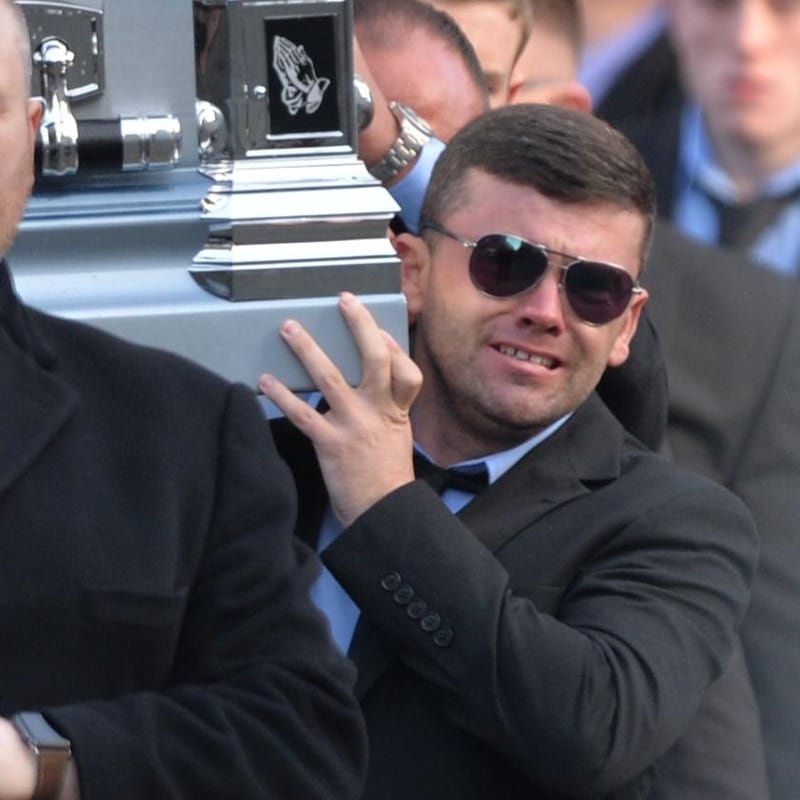
Liam Byrne has only ever served prison time for so-called “freelance” crime – an armed robbery and a savage assault, both carried out of his own volition when he was still a teenager. In the 15½ years since he was released from a six-year prison term for the assault, more of which later, he has spent just five days in jail, all for minor matters unrelated to organised crime.
For many years he has had an opulent lifestyle. Though the last three years have been more challenging and his assets are now being aggressively pursued by the Cab, he remains at liberty and is not charged with any crimes. Byrne continues to traffic drugs and he is still a man of means – for the time being at any rate.
Early years
Born on October 30th, 1980, Liam Byrne is the second youngest of six siblings – three boys and three girls – born to James (71) and wife Sadie Byrne (69). The youngest sibling, David, was shot dead when a group of five armed men, some of them dressed as gardaí, stormed a boxing tournament weigh-in in the Regency Hotel, north Dublin, three years ago.
The Byrne family home has always been at Raleigh Square in Crumlin. Liam Byrne's pensioner father is a convicted criminal who also goes by Jemmy and is nicknamed "Jaws" in the underworld and in the media. Byrne snr was once an associate of Martin Cahill, the former gang leader known as The General. He has a history of fraud and counterfeiting. His last known paid employment was way back in 1974, some 45 years ago.
However, despite his lack of legitimate income, he owns his own home, mortgage-free, on Raleigh Square with his wife. He paid the Revenue Commissioners €208,400 in 2004 after Revenue and the Cab issued him and wife Sadie with a tax assessment of €378,612. Some of the money paid was funded by €22,000 in cash seized at his home in 2001.
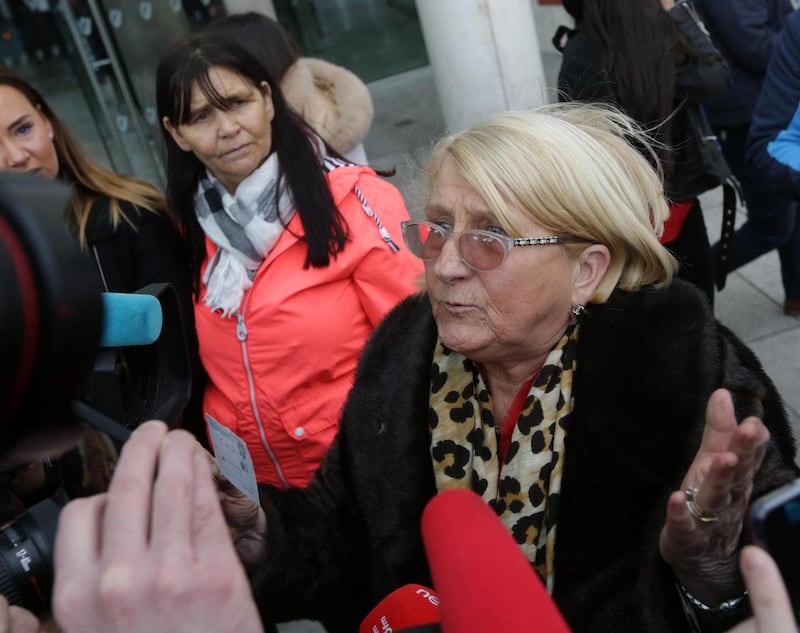
James Byrne sold one of his properties to his daughter, Maria, for €100,000 two years later. The Cab claims he sold another property, in 2015, for €80,000, though he claims he gifted it to Maria "for love and affection".
In November 2002, James Byrne also agreed to repay €43,353 in unemployment assistance he was not entitled to. He has offered no explanation for where his money comes from and claimed a Rolex Oyster watch, valued at €35,200, that the Cab is seizing from him was a gift from a family member but refuses to say who.
Liam and David Byrne both attended Ardscoil Éanna in their native Crumlin. Garda sources say Liam developed a reputation as a violent criminal who was effectively a member of a criminal gang from his early teens.
“He confidently threw his weight around from the time he was very young,” says one source who remembers the young Liam Byrne. “He could really take on anyone because he knew he was backed by a gang and everybody else knew it too. He was menacing and an awful mouth, even as a kid.”
Teenage drug dealer
Liam Byrne was initially known to gardaí as a street dealer of recreational drugs from the time he was in his early teens, starting with cannabis and graduating quickly to ecstasy and cocaine.
Byrne and a large group of teenage boys from Crumlin and Drimnagh he ran with were supplied drugs in those days by Christy Kinahan, then an emerging drug dealer in the Irish context.
Kinahan is from St Teresa's Gardens, in the same southwest inner city area as the Byrne family home. By the time Liam Byrne reached his early teenage years Kinahan was in his late 30s and basing himself between Dublin and Tamworth in England.
Kinahan had by this time been in prison in Ireland for dealing heroin and in the Netherlands for handling stolen goods.
However, he was at liberty for the first half of Liam Byrne’s teens. At that time, Byrne was selling drugs with his large group of young friends. Their “gang” began to form around this activity. Gardaí now say Christy Kinahan was the first leader of that gang.
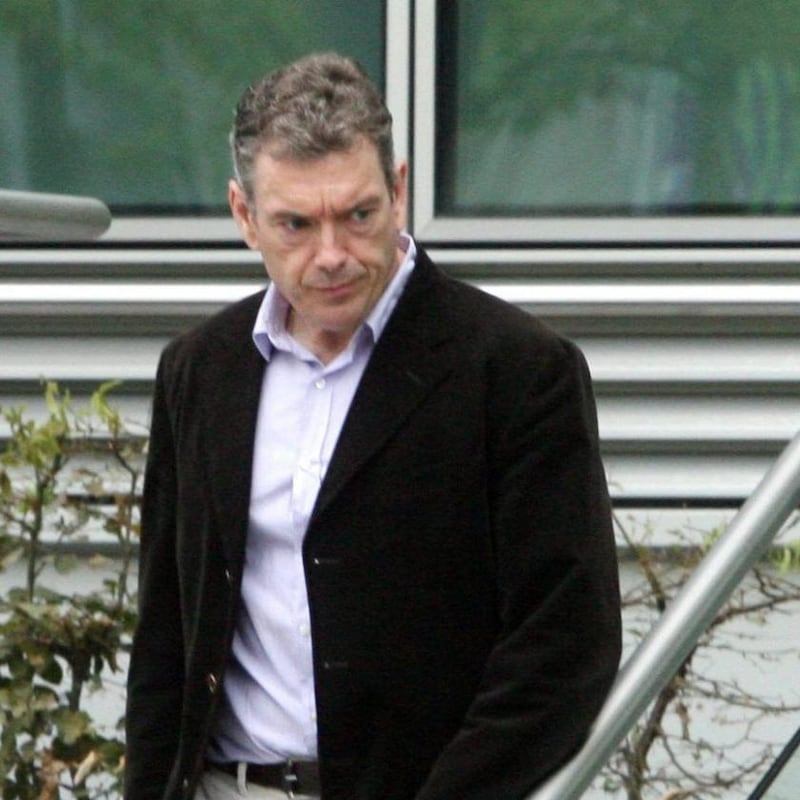
The gang initially included the now notorious gangland figures Brian Rattigan and Freddie Thompson. The group suffered a setback when Kinahan was arrested in Dublin in 1997 and jailed for four years after being linked to a batch of stolen cheques.
But the young Byrne and his associates kept themselves busy, sourcing drugs elsewhere on the Dublin market and selling them on. Leadership of the still very young but rapidly emerging criminal group passed to Freddie Thompson.
Byrne was also involved in robberies at this stage. In July 1998, aged 17, he teamed up with his close friend Liam Greenhalgh, the Ireland under-16 soccer captain, to carry out armed robberies on two shops in Dublin’s south inner city. An off-duty garda walked in on the second robbery.
Liam Byrne subsequently pleaded guilty to burglary, dangerous driving and firearms charges. He was convicted in January 2000 and was lucky to receive only a four-year suspended sentence and to avoid prison. His luck didn’t last.
Spring 2000
On April 23rd, 2000, weeks after walking free from court following his armed robbery conviction, Liam Byrne savagely attacked the former League of Ireland footballer Trevor Donnelly.
Donnelly and his partner Jennifer Doyle had become involved in a verbal dispute with three women at the Abrakebabra takeaway in the Crumlin Shopping Centre. The women followed the couple from the chipper, hitting them as a security guard intervened. Byrne arrived in his car and ran at Donnelly, hitting him on the head with a baseball bat and continuing to batter the victim as he lay on the ground. When Jennifer Doyle urged Byrne to stop he said: "Tell him if he wakes up it's bullets." Byrne then put the baseball bat in the boot of his car and drove off.
While about 50 people were present and most would have known Byrne from the area, only Doyle and Donnelly would give evidence. The others identified by the Garda were simply too afraid of Byrne and his associates to give testimony.
Back before the courts following this attack, Byrne had his four-year suspended sentence for armed robbery activated. He was jailed – for his first term of imprisonment – on May 23rd, 2000. When he went to trial for the Donnelly assault a further two years were added to his jail time – a six-year sentence, or 4½ years when remission was factored in.
Byrne offered Jennifer Doyle €50,000 not to give evidence, and told her she and her partner, Trevor Donnelly, would be killed if she pressed ahead
Byrne did what he could to avoid being convicted of the assault, but the bravery of Jennifer Doyle won out in the face of extreme harassment. Byrne’s intimidation of Jennifer Doyle was typical of his methodology – leveraging those around him to help him get his own way through violence – even if on this occasion it failed.
Byrne first offered Doyle €50,000 not to give evidence, and told her she and Donnelly would be killed if she pressed ahead. She declined the money and persisted with her plans to testify. Following further threats from Byrne’s group, she was forced to leave her home after it was shot at. She was then the subject of a murder plot; an INLA gunman was lined up at one point to kill the mother of two to ensure her evidence could not be given.
After giving evidence in the case, she was badly injured in an assault in the corridors of the Four Courts. Doyle was at one stage living in B&B and hotel accommodation, under an alias, and was virtually penniless. Through it all she persevered, and her testimony dragged over the line the State’s case against Byrne.
The six-year sentence that resulted meant Liam Byrne was out of circulation for a long time. The world he belonged to was already changing, and by the time of his release it would be very different.
Christy Kinahan released
Two months before Byrne was first sent to prison, the up-and-coming gang he was a member of imploded. Three of its members were caught with £500,000 worth of ecstasy tablets and up to £750,000 of cocaine in a room in the Holiday Inn on Pearse Street in Dublin’s inner city.
Two men were arrested at the scene and charged, but the third man, Declan Gavin, was released without charge. A bitter row ensued within the group over whether Gavin had informed on the others; the gang split in two as a result. One faction came under Brian Rattigan's leadership. The other was led by Freddie Thompson and Declan Gavin, who was a close friend of Liam Byrne.
As Byrne, then aged 19, settled into life in jail in the summer of 2000, the gang dispute among his associates escalated, with a series of beatings, drive-by shootings and pipe bomb attacks.
The following year, in March 2001, Christy Kinahan was released from prison. He had various aims: to keep himself out of the reach of the Cab; to avoid being caught up in the worsening Crumlin-Drimnagh feud violence, and to get close to the European cocaine wholesale market. He moved to the south of Spain some months later.
Within weeks of Kinahan’s departure the Crumlin-Drimnagh feud claimed its first life: that of Declan Gavin, aged 21 at the time. He was stabbed to death by Brian Rattigan, in August 2001, at the same Abrakebabra branch where Liam Byrne had attacked Trevor Donnelly. The feud would last a decade and 13 men would be killed, with Thompson its main protagonist.
2004 to 2008
By the time Liam Byrne was freed from Mountjoy Prison in November 2004, having served 4½ years, things had changed. The teenage gang he had been running with at the time of his imprisonment were now in their 20s: an established drugs gang under the leadership of Freddie Thompson.
They had a major supply line of drugs coming from Christy Kinahan in southern Spain, where Kinahan had become a key wholesaler of drugs in the European context. When Byrne resumed his drug dealing he did so at a higher level: a beneficiary of Christy Kinahan’s rise.
Byrne and Thompson became regular visitors to Kinahan in Spain. They assumed the role of receiving Kinahan’s drugs shipments into Ireland and overseeing their distribution and debt collection, the latter with help from other contacts of Kinahan’s in Ireland.
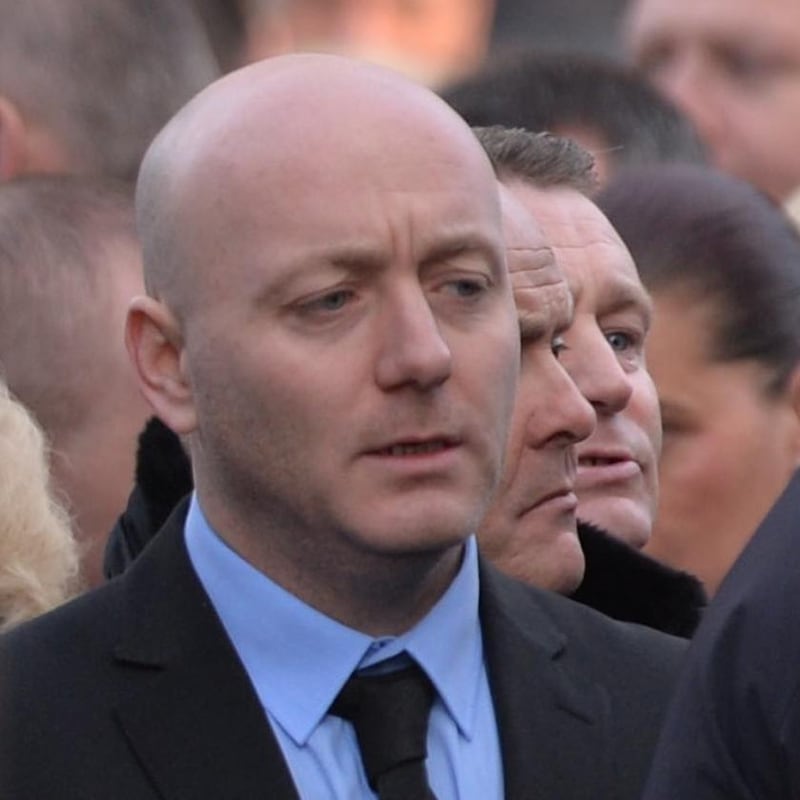
Thompson, though, had problems. He was embroiled in a second feud in 2007 and 2008, this time with the INLA in Dublin. It forced him to flee Ireland regularly, during which time Liam Byrne gradually assumed control of the gang – its third leader after Kinahan and Thompson.
Liam Byrne was now at the head of what the Cab terms the “Byrne organised crime group”. His owed his position to the actions of others. His initial wide group of associates had split and become engaged in a murderous feud while he was in jail. The gang he had rejoined on his release was at the centre of the drugs market, thanks to Christy Kinahan’s move to Spain and criminal business success.
And Thompson had been forced to flee Dublin because of the threat to his life from the INLA, leaving leadership of his gang in the city to Byrne. By 2010 the Crumlin-Drimnagh feud had petered out. Most of those killed were on one side: Freddie Thompson had virtually wiped out Brian Rattigan’s faction.
Recession activity
The Byrne group pursued the singular goal of servicing the needs in Ireland of the international Kinahan organised crime group. And for a near six-year period – until February 2016, to be precise – he did just that largely untroubled by his rivals or by the law.
Despite the recession, the demand for drugs on the streets, and in the pubs and clubs, of Ireland remained high, even if Dublin was no longer as insatiable as it had been in the Celtic Tiger years.
The Garda enjoyed considerable success during these years, striking against the Kinahan and Byrne drugs operation, with some seizures valued at more than €10 million. In May 2010, two eastern bloc over-the-shoulder rocket launchers were found along with an AK47, magazine, ammunition and cocaine valued at €700,000 in rented storage in Co Kildare. It was the first time rocket launchers sourced by gangland criminals had been seized by the Garda.
Countless other inquiries have seen the Garda find men with loaded guns or consignments of drugs – intercepted on their way to shoot a rival or bring drugs to a customer on behalf of the Byrne group. And the pattern is almost always the same: the men caught in possession of the contraband are the hired help rather than the main players.
Just after Byrne took over gang leadership in 2008, for example, €1 million in heroin owned by the gang was found at the Spawell Complex in Templeogue, Dublin. And cocaine valued at €1 million was found in a follow-up search.
The gang's operations were unaffected by losing two €1m drug consignments on the same day or by the jailing, for 12 years, of the men caught being paid to courier them
The gang’s operations were unaffected by losing two €1 million consignments of drugs on the same day or by the jailing, for 12 years, of the men caught while being paid to courier them.
The supply of drugs from Colombia, Afghanistan, Morocco and other source countries was inexhaustible; the number of young men willing to step up and work for the Byrne group likewise. However, a dispute in Spain in 2015 between Dublin criminal Gary Hutch and Daniel Kinahan – leading to the Kinahan-Hutch feud – would turn the tide against the Byrne operation back in Dublin.
Gary Hutch, from Champion’s Avenue in Dublin’s north inner city, tried to shoot Daniel Kinahan dead, but missed and wounded another man.
Prior to the dispute, Gary Hutch had been a member of the Kinahan cartel and had invested heavily in it, using the proceeds of a multimillion-euro robbery. However, when he tried to shoot Daniel Kinahan in a row over money and failed, he fled Spain as he knew his life was in danger.
Back home in Dublin his family, including his uncle and veteran armed robber Gerry Hutch (56), tried to rescue the situation. The family brokered what they believed was a peace deal with the Kinahans; paying €200,000 in reparations for the shooting in exchange for an assurance the matter was resolved.
With that secret deal in place, Gary Hutch felt assured and returned to Spain. However, the Kinahans reneged on the agreement and shot him dead there in September 2015. Hutch was aged 34.
Some five months later a group of armed men stormed the Regency Hotel, north Dublin, intent on killing Daniel Kinahan in revenge for the murder of Gary Hutch. Daniel Kinahan was visiting Dublin for a boxing tournament and was in the hotel with members of the Byrne organised crime group when the gunmen burst into the tournament weigh-in.
Kinahan managed to escape on foot, but two of his associates were wounded and one shot dead. The man killed was David Byrne, the 32-year-old younger brother of Liam Byrne.
Before David Byrne was even buried, a member of the Hutch family – Eddie Hutch – had been shot dead in revenge. There followed a Kinahan-on-Hutch murder almost every month for the next six months. To date 19 people have died in the Kinahan-Hutch feud; all but two killed by the Kinahan side.
The calls for the State to take more action against the Kinahan cartel – and Liam Byrne's gang – grew loudest after the display of wealth at David Byrne's funeral
The calls for the State to take more action against the Kinahan cartel – and Liam Byrne’s gang – grew loudest after the display of wealth at David Byrne’s funeral. Days before that funeral, the Cab had already zoned in on Liam Byrne, and 29 days of surveillance placed on his west Dublin car business would show it was a front for money laundering that sold no cars.
On March 9th, 2016, the Cab raided 19 properties in Dublin and the comfortable world of Liam Byrne and his associates came to an end. The past three years has seen a relentless drive by the bureau, under Det Chief Supt Pat Clavin, to afflict and degrade the Byrne group. A garage Byrne set up as a front to launder his drugs money and to act as his gang's slush fund has been closed and its fleet of luxury cars confiscated. The bureau has also gone after bank accounts, luxury watches worth tens of thousands of euro and the homes of some of the gang members and their dependants.
The Byrne group
Liam Byrne’s gang is referred to by the Cab in its submissions to the High Court as the “Byrne organised crime group”.
Much of the detail of the Cab’s case against the Byrne organised crime group has emerged before now. However, The Irish Times has secured unpublished documents that offer fresh insight.
In the Cab’s case against Liam Byrne, 11 people are named. Four are said to be senior members of the Byrne organised crime group. The other seven, while not members of the group, have access to the wealth of the gang and are involved in money laundering.
With Liam Byrne as leader, also named as senior managers in the Byrne group are: Liam Roe (40), Mangerton Road, Drimnagh; Sean McGovern (33), Kildare Road, Crumlin, and Darren Foster (39), Dublin's north inner city.
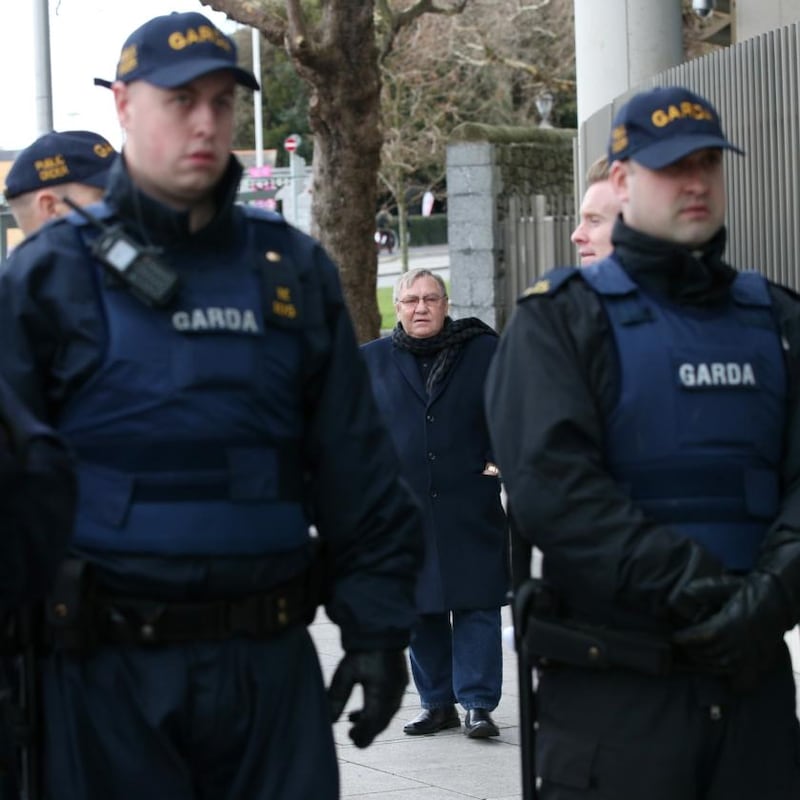
Among those who are non-members but have access to the group’s money are: Liam Byrne’s partner Simoan McEnroe, his sister Maria Byrne (41) and his parents, James and Sadie. Darren Foster’s wife Jennifer Foster is also one of the seven non-members with access to the gang’s money, as is Anita Freeman, Sean McGovern’s partner. The final person of that status named is Kelly Quinn, partner of Regency Hotel shooting victim David Byrne.
A number of other men are listed as members of the Byrne organised crime group in the unpublished documents, most of them publicly linked to the gang.
The gang members named by the Cab include four of Liam Byrne's first cousins: Liam Brannigan (37), from Bride Street, Dublin 8; Eoin O'Connor (33), James Street, Dublin 8, and brothers Freddie (38) and Richard Thompson (42), originally from Loreto Road, Maryland.
Freddie Thompson's wife is Vicky Dempsey and her brother Karl Dempsey (40) is said to be a gang member. Richard Thompson is married to Catherine Gray (42), whose brother Paul Gray is another gang member.
Other men named by the Cab as members of the Byrne organised crime group are: Gregory McGovern (34), Windmill Road, Crumlin, who is a brother of Sean McGovern; Anthony McEnroe (32), Slievemore Road, Dublin, who is Liam Byrne’s de facto brother-in-law, and young Drimnagh foot soldiers Lee Gibson (21), Knocknarea Avenue, and Nathan Little (20), Lissadel Green.
The remaining two are Philip Griffiths (38), originally from Rafters Road, Drimnagh, and Graham Whelan (36), originally from Clonard Road, Drimnagh – the two men jailed for the Holiday Inn cocaine seizure 19 years ago that split the original large group, causing the Crumlin-Drimnagh feud.
In the High Court, Judge Carmel Stewart noted the Cab had examined the financing and purchase of a number of houses, adding that these were in very close proximity and "serve as a stronghold out of which the Byrne organised crime group operates".
This covered six properties in all in Crumlin between Raleigh Square, Kildare Road and Windmill Road.
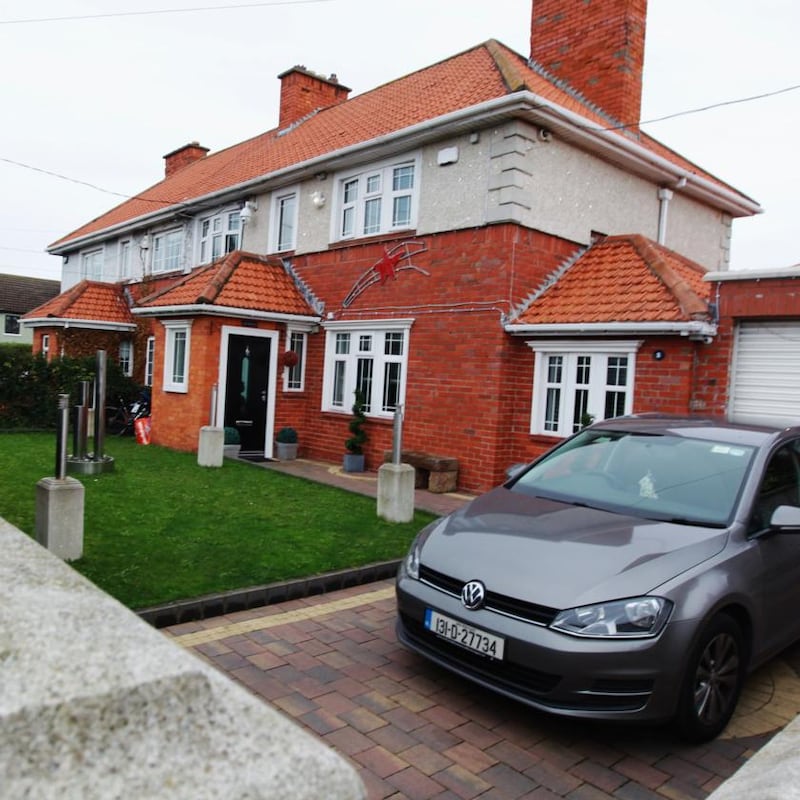
Byrne has resided at 2 Raleigh Square with his partner and the two youngest of his three children. However, the house was bought in the name of his sister Maria in 2011. The property dates back to the 1920s and was built for Guinness workers by a trust established by Edward Guinness, the first Earl of Iveagh. Although purchased by Maria Byrne, Liam Byrne lived in it and paid her €850 per month rent.
In the five-year period between the purchase and the hall door being kicked in by Cab officers during the dawn super raid of March 2016, a staggering €740,000 had been spent refurbishing and extending the property.
The windows are bulletproof, with reinforced and blastproof doors, as well as CCTV to monitor the property inside and out
While that price tag is very difficult to believe, aerial images of the property go a considerable way to explaining the estimate. While the view from above of the surrounding houses reveals modest homes with a small garden to the front and a much larger one at the rear, Byrne’s home has expanded into a mini-compound and the house has roughly trebled in size.
It has been extended, to fill what was initially side access. And that side extension runs not only the depth of the house, but the full length of the back garden. That extension links the main property to another building built at the end of the garden. And in what remains of the garden, a small courtyard and a children’s padded playground have been constructed.
Inside the house, the windows are bulletproof, with reinforced and blastproof doors as well as a state-of-the-art CCTV system to monitor the property inside and out. A bar, home cinema, jacuzzi and a gym had also been installed, with high-spec fixtures and fittings throughout the property.
The house is currently being taken into the possession of the Cab and has been stripped of much of its fixtures and fittings before the handover, which is due within weeks.
Byrne and Kinahan
The Cab treats the Byrne organised crime group, based in Ireland, and the Kinahan organised crime group, based abroad, as two entities. The bureau says the Byrne group works for, and is part of, the larger Kinahan group; the latter now headed by Christy Kinahan’s sons Daniel and Christopher jnr.
The Cab contends that Liam Byrne is a “trusted lieutenant of Daniel Kinahan and the Kinahan organised crime group”. With Liam Byrne as leader, the Byrne group is involved in “the importation and distribution of controlled drugs and firearms” in the Republic.
And the Kinahan crime group is involved in the importation and distribution of drugs and firearms in the Republic, the UK and mainland Europe. The Kinahan crime group, the Cab says, also has associations that facilitate international crime in Europe, Asia, the Middle East and South America.
"The Byrne organised crime group originated in Dublin but now has interests in Spain, the Netherlands, South America and Dubai, " an unpublished ruling of the High Court states. "It was previously led and directed by Christopher Kinahan snr, an Irish citizen who left Ireland to live in Spain and direct the operations of the group from that jurisdiction. It would appear that Mr Kinahan is now resident in Dubai, United Arab Emirates, and that the day-to-day operations of his drug trafficking are managed and controlled by his sons, Christopher jnr and Daniel Kinahan."
The bureau has also told the High Court Liam Byrne is “heavily involved” in violent crime, with connections to organised crime in the UK, Spain and the Netherlands.
Byrne saddled with Kinahan risk
In moving to Spain in 2001 and building a drugs empire there before relocating to Dubai, the Kinahans retained no interests or assets in Ireland, save for supplying drugs onto the island.
And that means the Cab cannot confiscate the Kinahans’ assets. Cab orders can apply only to assets physically located in Ireland or assets accrued by criminals while they were tax domiciled in the State.
In emigrating and staying away, the Kinahans effectively outsourced the risk posed by the Cab to the Irish criminals they left in Ireland working for them; Liam Byrne has been the principal figure in the latter endeavour for many years, and he faces an onslaught from the Cab at present.
The Garda is under extreme pressure to asset strip the key players, to ensure the State disenfranchises those who so brazenly challenge its authority. With the Kinahans untouchable, Byrne is the next best thing.
If any of the senior people are going to be caught, it will be Liam Byrne, because he was installed by the Kinahans in Ireland to do the work. And to carry the risk
But he is no easy target. Asked whether Byrne will be convicted and jailed, experienced Garda members have mixed views. Some say because the Kinahans and Byrne have all grown so powerful, they outsource the risk of physically possessing drugs, guns and money to others. “Without catching them actually in possession of drugs or firearms it will be very hard,” says one, of the prospect of Liam Byrne being convicted.
Another disagrees, saying if enough resources are put into Byrne and the investigation is not scaled back, even if years pass, a conviction would be secured eventually. “Years ago when joyriding was a big problem in parts of Dublin, kids would all pile into one car,” he explained. “The car would be chased and they’d have to [abandon] it eventually. The guys sitting next to the doors were always out fast and gone.
“But the one who agreed to sit in the middle of the backseat had to wait a second for the others to get out, and he’d be the one you’d catch. Liam Byrne is a bit like that now; the Kinahans have made sure of it.
“If any of the senior people are going to be caught, it will be him, because he was installed by them in Ireland to do the work. And to carry the risk.”

